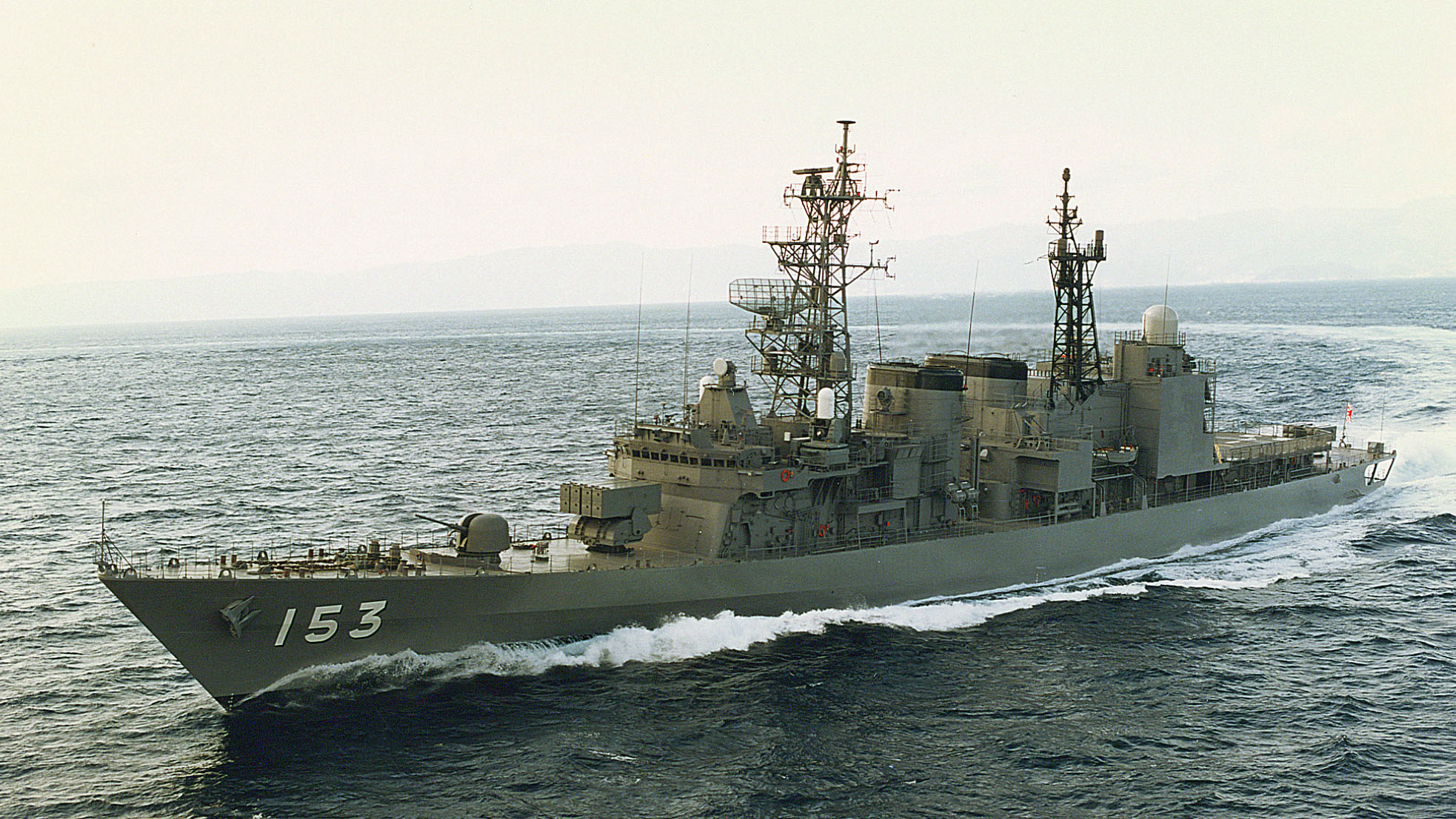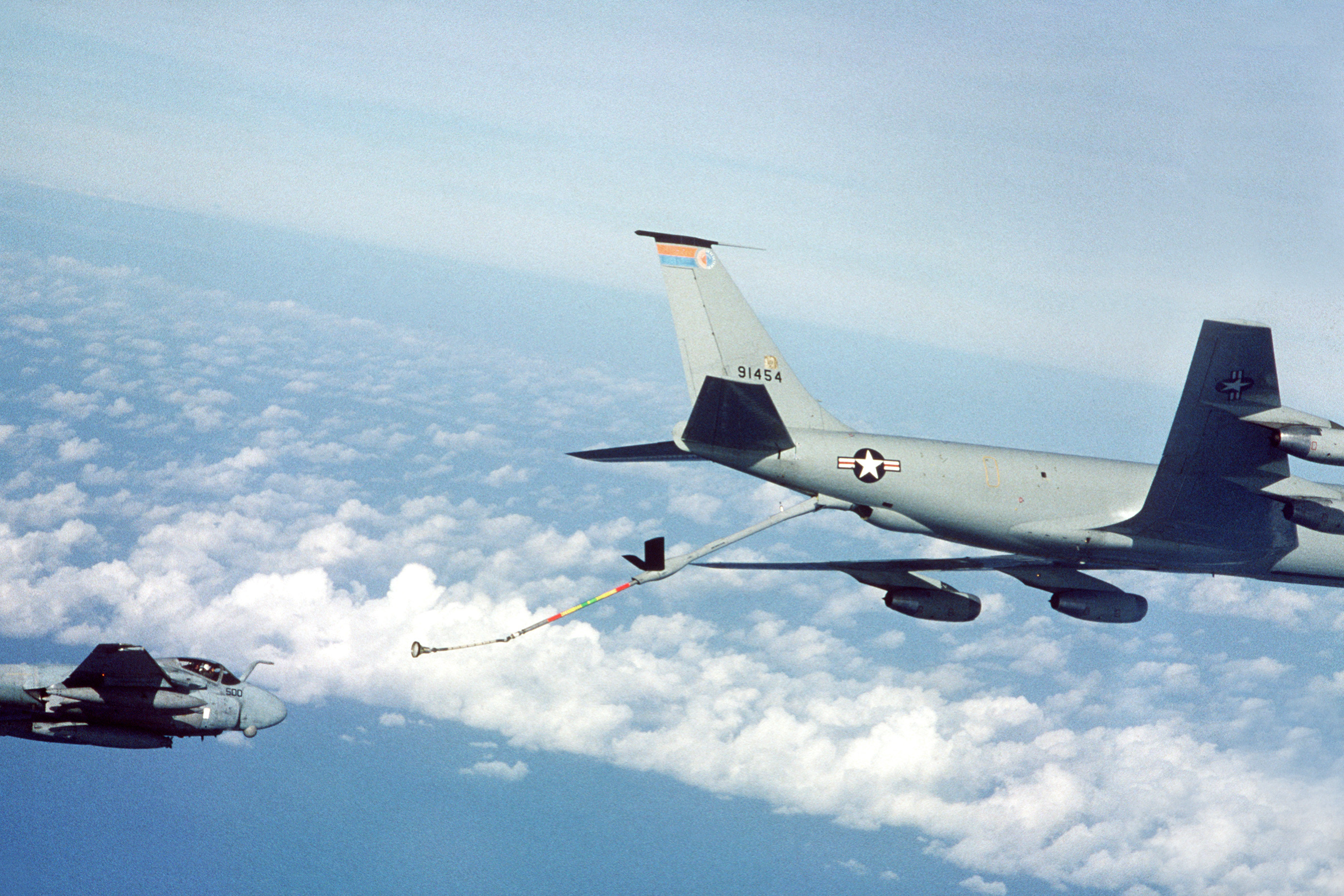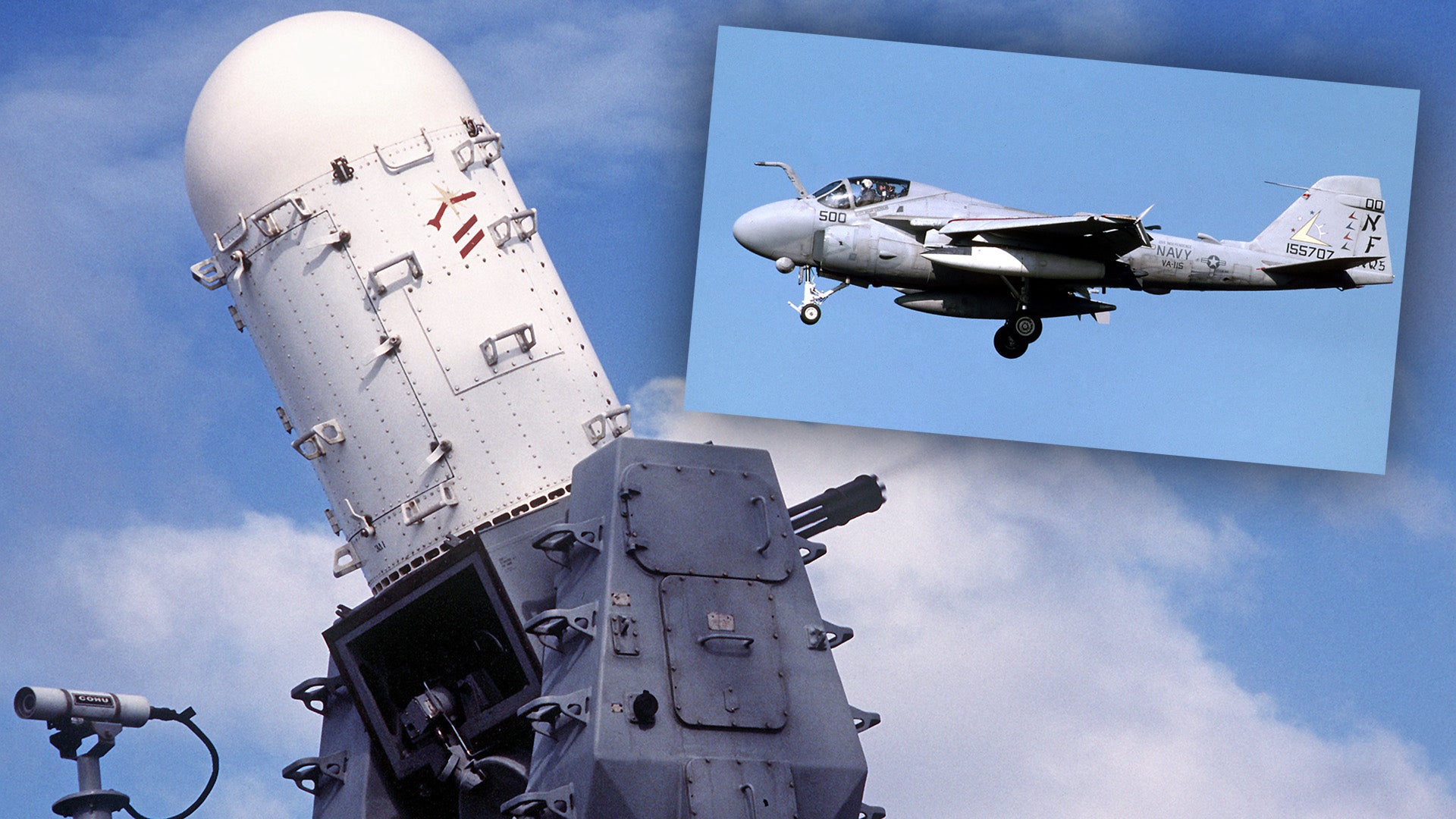Spitting out up to 4,500 rounds of 20mm ammunition a minute from its M61 Vulcan cannon, the venerable Mark 15 Phalanx close-in weapons system, or CIWS — pronounced “sea-wiz” — has long been the last line of defense for numerous surface combatants operated by the United States and its allies. Aircrews are well aware how devastating this type of weapon can be, but for two U.S. Naval Aviators aboard an A-6E Intruder strike aircraft, they got to experience it first-hand. Luckily, both survived the encounter without serious injuries.
On June 4, 1996, pilot Lieutenant Commander William Royster and bombardier-navigator Lieutenant Keith Douglas, assigned to Attack Squadron 115 (VA-115), the “Eagles,” were taking part in the biennial Rim of the Pacific maneuvers, or RIMPAC, which has long been billed as the world’s largest maritime exercise. They were in A-6E Bureau Number 155704, flying off the Forrestal class aircraft carrier USS Independence, which was based in Atsugi, Japan.

At around 4:15 pm local time, as part of these drills, the Intruder was towing a target, not a role the all-weather strike aircraft is often associated with, but an important one for testing the readiness and accuracy of naval air defense weaponry — in this case, the two Phalanx aboard the Japan Maritime Self-Defense Force (JMSDF) Asagiri class destroyer Yugiri (DD-153).
Royster and Douglas, in the A-6E, were towing a roughly six-foot target around 1,500 miles west of Hawaii. The jet was at an altitude of 700 feet and a speed of 340 knots. According to U.S. officials, the target was trailed around 2.5 miles behind the jet, while Toshinori Yanagiya, the Japanese Ministry of Defense official responsible for training, told Reuters the tow cable was just 100 meters — around 300 feet.
Whatever the distance, things went badly wrong. This part of the exercise was meant to test how rapidly the Yugiri would respond to an aerial threat, the crew first identifying the jet overhead — in this case approaching from the left — and then locating and engaging the target with live ammunition. While the banner target was made of radar-reflecting material to make locking onto it easier, the destroyer’s crew instead got the Intruder in their sights.
According to Lieutenant Jeff Davis, a spokesman for the U.S. Pacific Fleet, the gun was firing at 3,000 rounds per minute, the maximum for the earlier Block 0/1 versions of the weapon. The weather was good, with clear skies.
A Phalanx CIWS aboard the USS Germantown trains itself on an AV-8B Harrier II during an operational test:

As the Vulcan cannon hosed the jet with 50 rounds per second, its engines rapidly caught fire and the A-6 began to spin out of control, with the hydraulics knocked out. Fortunately, Royster and Douglas had time to eject, the rounds reportedly only impacting the center fuselage. The jet came down on the right of the JMSDF destroyer.
The naval aviators were picked up out of the sea only minutes later, rescued by a motor launch from the Yugiri and then taken back to the Independence by helicopter. Royster needed surgery for facial lacerations, while Douglas was treated for superficial abrasions and was soon back on duty.
Clearly, it was a lucky escape and the situation could easily have been tragic, as the pilot’s mother, Carolyn Royster, told the Associated Press: “I imagine he’s pretty well bruised … I’m glad it was a call like this and nothing worse.”

The defense secretaries of the two nations involved launched enquiries, and Japan put a temporary ban on using live ammunition during exercises, while U.S. officials played down the incident to smooth things over with their close ally.
“It was an unfortunate accident; accidents happen,” said Lieutenant Davis. “This is not something to get mad about.”
American President Bill Clinton formally accepted a Japanese apology for the incident, shouting “They’re okay,” to White House reporters as he left Washinton DC on a trip the following day.

Initially, the blame for the accident fell on some kind of mechanical failure in the Phalanx system, before it was discovered that it had been a case of human error. Since then, the Phalanx has been upgraded with new infrared and electro-optical cameras slaved to the boresight, expanding its ability to engage surface targets but also providing a useful visual identification-friend-or-foe (IFF) capability, something that helps avoid friendly fire incidents.
Back in 1996, the situation was all the more embarrassing for Japan, as the RIMPAC blue-on-blue incident came after a Japan Air Self-Defense Force (JASDF) F-15J Eagle fighter jet had shot down another example of the same using a Sidewinder missile, during exercises the previous November.
After a distinguished career, which had begun in 1963, the Intruder was in the final months of service when it took part in RIMPAC in 1996, one of its very last assignments. Following successive combat actions in Vietnam, Lebanon, Libya, and Iraq, the A-6 had rarely been far from hostile fire, as Lieutenant Davis wrily summed up: “They went out with a bang.”
Contact the author: thomas@thedrive.com
